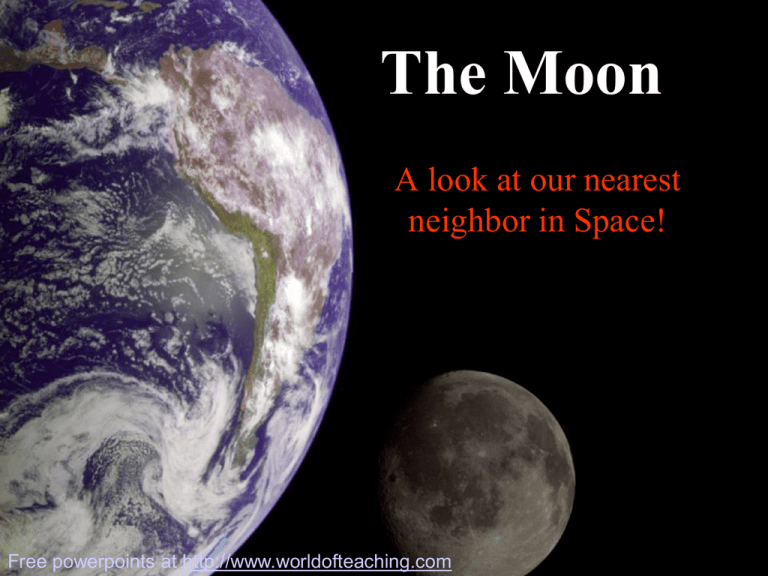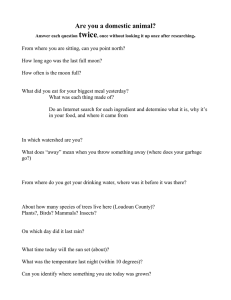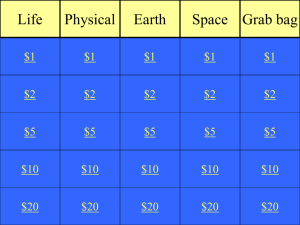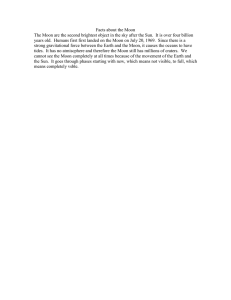The Moon A look at our nearest neighbor in Space!
advertisement

The Moon A look at our nearest neighbor in Space! Free powerpoints at http://www.worldofteaching.com What is the Moon? • A natural satellite • One of more than 96 moons in our Solar System • The only moon of the planet Earth Location, location, location! • About 384,000 km (240,000 miles) from Earth • 3,468 km (2,155 miles) in diameter (about ¼ the size of Earth) The Moon’s Surface • No atmosphere • No liquid water • Extreme temperatures – Daytime = 130C (265°F) – Nighttime = -190C (-310 F) • 1/6 Earth’s gravity Lunar Features - Highlands • Mountains up to 7500 m (25,000 ft) tall • Rilles (trenchlike valleys) Lunar Features - Craters • Up to 2500 km (1,553 miles) across • Most formed by meteorite impact on the Moon • Some formed by volcanic action inside the Moon Lunar Features - Maria • Originally thought to be “seas” by early astronomers • Darkest parts of lunar landscape • Filled by lava after crash of huge meteorites on lunar surface 3-4 billion years ago • Mostly basalt rock Craters Maria Movements of the Moon • Revolution – Moon orbits the Earth every 271/3 days • The moon rises in the east and sets in the west • The moon rises and sets 50 minutes later each day • Rotation – Moon turns on its axis every 27 days • Same side of Moon always faces Earth • Check out this demo! Far Side of the Moon • First seen by Luna 3 Russian space probe in 1959 • Surface features different from near side – More craters – Very few maria – Thicker crust Try the Moon’s crater History tutorial • What did you decide—did the rate of impact crater formation on the moon change over time? Now let’s try counting some craters • How accurate was your age determination? Is this a good tool? Now let’s try some Lunar geological Mapping





